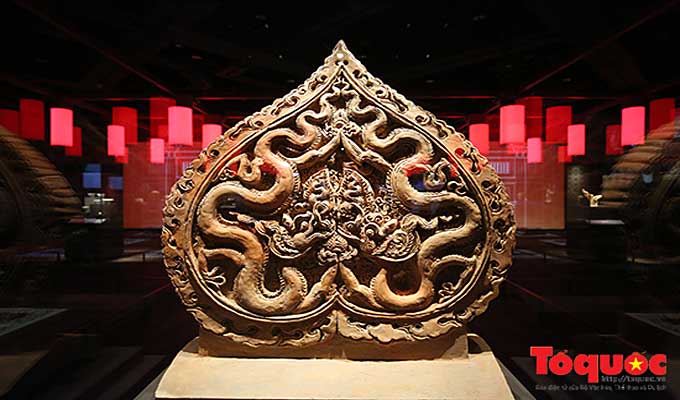An exhibition showcasing archaeological discoveries under the new National Assembly (NA) House recently opened in the NA’s two basement levels.

After nearly 4 years of hard work, the Centre for Thang Long Royal Citadel Research under the Viet Nam Academy of Social Sciences has completed the exhibit "The archaeological discoveries underground the National Assembly house".
More than 400 artifacts and nearly 10 relics was restored by 3D technology, which reflects the history of 1,300 years of continuous development of Viet Nam through periods of Dai La, Dinh, Ly, Tran, Le.
It is considered the first Archaeological Museum in Viet Nam, with an area of 3,700 m2 in the NA’s two basement levels.
The exhibits are displayed in an archaeological stratigraphic principle (chronological order). Following this structure, works on display at the second basement date back to the early Thang Long period, the time before King Ly Cong Uan decided to relocate the royal capital from Hoa Lu in Ninh Binh province to Thang Long (now Ha Noi). The first basement introduces artefacts dated back to Thang Long period or after the King’s decision.
Highlights and historical stories featured in each display space detail the value of the heritage during that period of time.
In addition, the walkway for the visitors was designed at the centre of the exhibition space room for convenient access to the exhibits, which are displayed at both sides along the corridor. The exhibits include architectural materials and daily utensils.
Visitors are also invited to watch films on Ly dynasty’s architecture in a 60-people screening room located on the second basement.
The spotlights of the Dinh-Early Le period display two pictures made from pieces of broken bricks and tiles. The ‘Dragon’ picture is showcased next to a copy of the King’s Chieu Doi Do (Royal Proclamation on Relocating the Capital) with an aim to remind visitors about the historic decision of the King on transfering the capital to Thang Long (Soaring Dragon). Meanwhile, the ‘Binh Minh Thang Long’ (Dawn of Thang Long) captures the culture of Dai Viet, the former name of Vietnam under the Ly dynasty.
The museum will also help to advertise Vietnamese cultural heritages to visitors at home and abroad in the coming time.